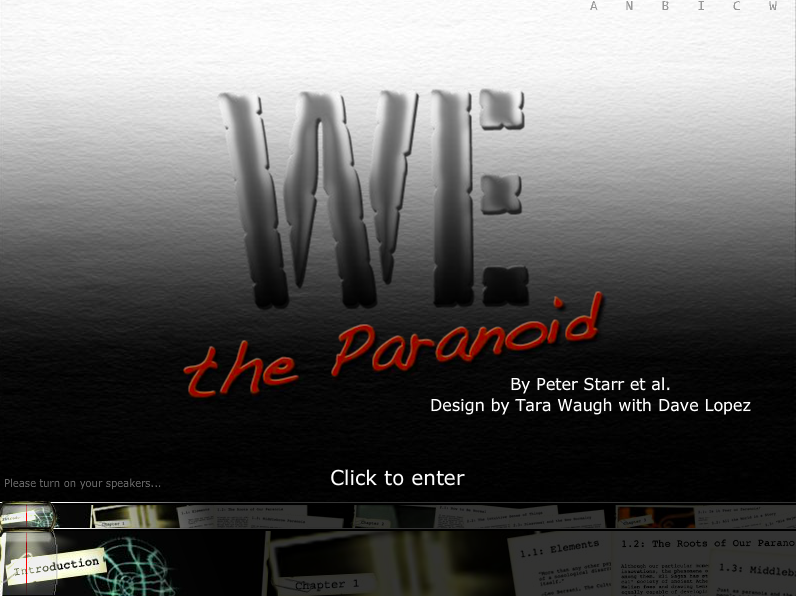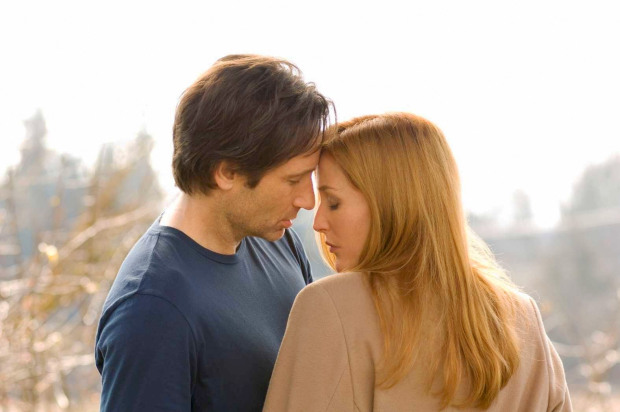
Wisdom is a perfect antidote to the paranoid style of American political culture today.
I miss paranoia. Let me explain.
In the mid-2000s, I worked on a multimedia project entitled We the Paranoid. You can view version 1.0 of it here.
One of the stories the project tells is of the pleasure that ostensibly normal, non-delusional viewers—viewers like us—take in coming to believe in the conspiratorial fantasies of a narrative’s male protagonist. In a common version of this conversion plot, our coming-into-belief as viewers is anticipated by that of a strong professionalized woman—Kathryn Reilly in Twelve Monkeys, Alice Sutton in Conspiracy Theory, Dana Scully in The X-Files—who, over time, falls for a conspiracy-obsessed would-be action hero (3.4)[1].

A salient characteristic of the paranoid style of 90s and 00s entertainment media is that it invites the viewer to vicariously enjoy the ego boost that paranoiacs crave—the conspiratorial-minded hero is saving the world, after all—but to do so in that mode of split belief that psychoanalysis knows as disavowal (2.3). We “know very well” that the conspiracies espoused by the narratives’ action-hero protagonists are absurd, “but all the same” we lend them credence in the interest of our narrative pleasure.
Seen from the vantage of 2019, this conceit feels quaint. What has changed?
In the 90s and 00s, the paranoid style of the militia or 911 Truth movements could still be seen as largely the province of a lunatic fringe. I dare say I was not alone in chuckling at the Militia of Montana’s claim that a map of America on the back of a 1993 Kix cereal box laid out the New World Order’s post-invasion plan for carving the United States into eleven regional departments. And how could one reasonably argue, with 911 Truth, that the Bush administration brought down the Twin Towers with concealed explosives when they couldn’t fake evidence of Iraq’s weapons of mass destruction (4.15)?
Today’s paranoid style no longer feels like fun and games. The last few years have treated us to claims that DNC staffer Seth Rich was murdered by MS-13 goons hired by Hillary Clinton for leaking her campaign’s emails; that the Mueller investigation was actually a cagey ploy on the part of Donald Trump himself to “drain the swamp”; and that the shooting at Sandy Hook Elementary was staged and the survivors of the Parkland shooting “globalist deep state crisis actors.”

Hillary Clinton’s take-down of then-candidate Donald Trump as an “Id with hair” beautifully captured the way Trump, like Freud’s unconscious, is blind to contradiction. But Trump also exemplifies the paranoiac Ego: self-centered to the point of megalomania, quick to project its sins and shortcomings onto others, and chronically prone to savior fantasies (3.3). When Trump claimed, at the 2016 Republican National Convention, that “I alone can fix it,” he (wittingly or not) echoed the world-savior presumption of countless conspiracy-minded action heroes of decades past.
Disavowal is surely operative in some elements of Trump’s base, who “know very well” that the 45th President is a liar and a charlatan, but follow him “all the same” because… [insert any number of reasons here]. No recent event better exemplifies the demise of the disavowal inherent to the “middlebrow” paranoid style of the 90s and 00s, however, than the climactic moment in “Pizzagate.” When Edgar Welch entered Washington, DC’s Comet Ping Pong pizza parlor with an AR-15 on December 4, 2016 to “rescue” the victims of a child trafficking ring ostensibly run by Hillary Clinton and her cronies, he showed just how deadly serious the paranoid style had become. Countless mass shootings since—against gay clubbers in Orlando, country music fans in Las Vegas, Jewish worshipers in Pittsburgh, Latinx shoppers in El Paso, and many others besides—have only reinforced that awful message.
At the same time, and only slightly less troubling, the very grounds for paranoia’s alternative appear to be shifting. At the end of his seminal essay, “The Paranoid Style in American Politics,” Richard Hofstadter remarks that “one of the most valuable things about history is that it teaches us how things do not happen.” One can surely say as much of personal experience. In the face of claims that the Bush administration brought down the Twin Towers, for example, a logical thinker with a strong grasp of history and a rich body of personal experience to draw on would likely ask: if 9/11 was indeed a government-constructed fiction aimed at bringing down Saddam Hussein, why were the ‘fictional’ hijackers Saudis, not Iraqis (4.16)? Or to quote Max Boot on a conspiracy theory that emerged on the very same day I posted this—the idea that Bill and Hillary Clinton were behind the apparent suicide of Jeffrey Epstein: “If the Clintons are so powerful as to slay their enemies, why weren’t they powerful enough to change 80,000 votes and defeat Trump in 2016?”
But what if historical understanding is devalued and experience itself ever more unreliable? How does one develop that intuitive sense of “how things do not happen” at a time when political discourse is increasingly confined to mediatic echo chambers, on the left as on the right; when our faith in visual evidence is challenged by the mounting sophistication of “deepfakes”; and when the privilege of authority itself is challenged, in part through an otherwise salutary questioning of traditional authority’s implicit biases?

In the early 21st-century, in other words, Hofstadter’s corrective to the paranoid style has largely fallen victim to an erosion of that consensual sense of reality or facticity on which it depends, and to the countervailing emergence of specifically tribal realities or facticities. And any contemporary paean to the virtue of Hofstadter’s intuitive sense must, at the very least, wrestle with its resemblance to a style of political decision-making—governance by “gut feeling”—that has landed post-9/11 America in any number of quagmires, beginning with the Iraq War.
As outmoded as the concept of wisdom can appear, wisdom is in fact a perfect antidote to the paranoid style of American political culture today. Where the paranoid style sees life as a clear-cut struggle between the forces of good and the forces of evil, wisdom sees any field of social action as both cognitively and ethically complex and the actions of individuals as profoundly shaped by their particular social, cultural, economic, and/or religious contexts. Where the paranoid style flattens out the other, seeing in her only a cog in a (generally evil) machine, wisdom fosters empathic care for the other and evinces a deep-seated sense of social justice. Finally, where the paranoid style seeks to capture all the world in a single grand narrative, wisdom practices more humble modes of narration and cognition.
Let’s be clear. The world of the paranoid style can be fun, even thrilling. It grants a reader, viewer, or actor a greater sense of self-importance by turning complex struggles into battles of unalloyed good against absolute evil and by placing him or her at the very center of those struggles, often in a savior role. Wisdom’s world is messier, more other-focused and overdetermined, with shades of gray most everywhere one looks. But ultimately, that is the world, in all its chaotic glory.
I miss paranoia, but I opt for wisdom.
[1]Throughout this post, numbers in parentheses refer to specific subchapters of We the Paranoid.